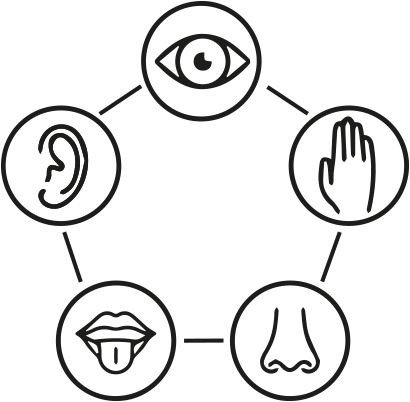| Sounding Bodies
5 September 2019
Led by:
- Genevieve Murphy – visual art performance with contemporary classical music; psychology and disability.
- Aart Strootman – guitarist and composer; physical modifications of instruments to find new sounds; teaches music history, (advanced) ear training, analysis, philosophy and performance studies.
|
| Intended learning outcomes (more on programme level)
Part of Marres’ Workshops ‘Training the Senses’. https://marres.org/en/program/training-the-senses-en/ |
| Learning objectives (course specific)
To compare musical instruments and the body as an instrument;
What if the body does not function well enough to train the instrument, the instrument needs specific care, or different ways of playing it can affect the sounds of the instrument? What if we take the body itself as an instrument, tune it, and join it with other bodies? |
| Objective statement (course description)
We are used to defining music as the product of bodies and instruments. As we train our body to play and listen, our bodies train the instrument to produce sound. The idea of mastery in music lies in the seamless match between body and instrument. We rarely discuss the requirements of a seamless match, or how it can be achieved, which means we need to search for the handicaps and exceptions to experience it.
What if the body does not function well enough to train the instrument, the instrument needs specific care, or different ways of playing it can affect the sounds of the instrument? What if we take the body itself as an instrument, tune it, and join it with other bodies? These questions are central at the first Training the Senses Fall Session, Sounding Bodies, with Aart Strootman and Genevieve Murphy. |
| Type of course :
extracurricular course |
| Target group :
general audience |
| Teaching method:
workshop |
| Activities
Start:
- Introduction; different musical instruments are presented
Training:
- “I think music as an art form is fluid, coming from a source that resonates.”
- What makes an instrument an instrument? How can we misuse those conventions in order to get to music?
- The instrument Hang or handpan is introduced, and how to play it is demonstrated. “This instrument has a constellation of pitches. Whatever you do on it, it always works, that is what it’s built for. You cannot prepare this instrument, you cannot escape the pitches that the designer made for it.”
- “We challenge the musician so much, we challenge ourselves as composer so much, without actually challenging the instrument itself.”
- “We, humanity, decided to divide music all based on the same twelve notes. When it comes to convention this is the biggest convention nowadays in music but actually it’s unnatural.” The electric guitar is played first normally and then placed down on the table, thus all the overtones in the string are demonstrated. “It also works for Marimba bars. This almost functions like a string.” How to play a Marimba bar is demonstrated. “The tones that are in this wood you can tune, and you tune it by carving out this arch. But of course, the distance is so minutious that you almost cannot hear it.” The carving is demonstrated.
- People are instructed to walk randomly around the room and when they hear a clap from one of the leaders, they should stop and sing out a note. “We are in ourselves also sounding bodies and we can tune ourselves, we can tune in. We’re all instruments, we’re all resonating.”
|
| Assessment of learning:
N/A |
| Effect:
N/A |
Additional biblio sources (available at Marres):
- Various musical instruments
|
